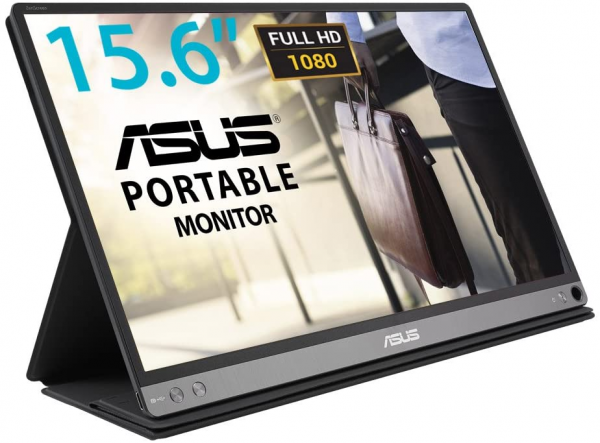Asus
Asus MB16AC: a small 15.6-inch screen with a single USB-C cable
Aprox. 259€
See specificationsThe Asus MB16AC monitor is original in more than one way. It's a small, portable 15.6-inch monitor that uses just one USB cable to power and pass the video signal. It also swaps the usual DisplayLink chip for USB-C DisplayPort mode to take advantage of the performance of graphics cards.
Positive points
A single cable for display and power.
Color temperature respected.
High contrast for an IPS model.
Very practical crutch cover.
Using a dual-screen configuration in mobility is a real pleasure.
Bad points
Obligation to have a USB-C port or a USB 3.0 port sufficiently powerful to power the screen.
Shiny tile.
Only two buttons for the OSD.
Limited maximum brightness.
Colors not faithful enough.
Our review
Presentation
The Asus MB16AC is a portable monitor powered by USB. It has a 15.6-inch (39.6 cm) IPS panel with a Full HD definition of 1,920 x 1,080 px. The screen alone weighs about 800 grams. It is supplied with a carrying case which protects it and which also acts as an adjustable stand. This model has been designed for mobile workers and those looking to extend their work surface while minimizing cables.
The Asus MB16AC monitor is sold for around € 310. Asus also offers the MB169C +, which differs only in the absence of the USB-C to USB-A adapter.
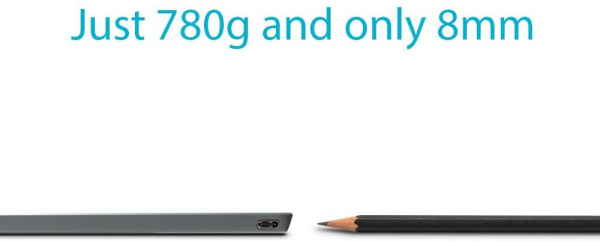
Ergonomics
The Asus MB16AC looks like a big touch pad, which it is not. It weighs a little less than 790 grams, but this weight reaches 1.18 kg with the cover which also serves as an adjustable stand.
The carrying case tilts at three angles: flat, around 60 ° and around 20 °. It also allows you to switch to portrait mode with a slight tilt back. The screen settings also allow automatic switching from display to portrait mode, like on a tablet.
The hole in the corner of the monitor is not used to hang the panel on a carabiner, but to use a pen as a crutch. Mobile users who do not want to burden themselves with the cover will be able to opt for this solution.
A word on the coating of the slab, shiny, which reveals some reflections.
The back of the monitor is classic. It takes up the design of ZenBook laptops, with circular brushed aluminum.
The connection consists of a single USB-C connector for everything. It supplies the screen with energy and ensures the transport of the video signal. To take advantage of the performance of the integrated graphics card, you must have a USB-C port managing the DisplayPort Alternate Mode for USB-C. Otherwise, the screen uses a built-in USB graphics converter and the display performance is not optimal.
This monitor is supplied with a USB-A to USB-C adapter which allows you to use the screen with any computer equipped with a USB 3.0 port powerful enough to power it. We have tried several computers, including desktop computers, and it works wonderfully. On the other hand - as specified above - it is necessary to make a cross on the use of the integrated graphics card and the DisplayPort Alternate Mode.
The control buttons on the left, the power button and the pen hole on the right.
The Asus MB16AC only has two buttons for settings. Suffice to say that this is not very practical, especially since there are many: choice of mode, adjustment of the blue light filter, brightness, contrast, color temperature, sharpness, overdrive (TraceFree), and many others. Asus offers for example Auto-rotation, GamePlus (timer, overlay viewfinder, screen alignment), QuickFit (quick window adjustment), EcoMode, etc.
In practice, this monitor is very pleasant to use. It provides a doubled workspace when on the move. The Full HD definition of 1,920 x 1,080 is perfectly suited for the diagonal of 15.6 inches. Be careful though, the maximum brightness (measured at 208 cd / m²) associated with the glossy coating of the slab does not facilitate outdoor use.
When the brightness is increased to 76 to obtain a white at 150 cd / m², the Asus MB16AC monitor consumes 8 W, ie a relative consumption of 119 W / m², higher than that of the average of the monitors in our comparison (100 W / m²).
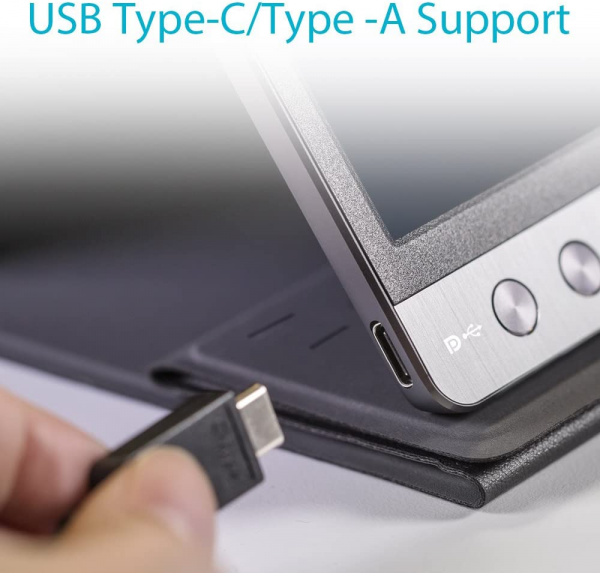
Colors and contrast
By default, the Asus MB16AC is set to Splendid mode which does not really offer the best image quality. If the temperature curve is stable and shifts to the reference value (6,500 K), this is not the case for the gamma curve which clearly lacks equilibrium. Finally, the colors cannot be considered as faithful, with a delta E much greater than 3, a value below which the eye no longer differentiates between the colors requested and the colors displayed.
We chose Standard mode and then adjusted the brightness to 76 to obtain a white close to 150 cd / m². The gamma curve gains in stability and the colors are a little more accurate (delta E now less than 5).
We failed to calibrate the monitor from our regular PC, probably due to the USB-A to USB-C converter which acts as a video gateway.
The contrast ratio measured at 1,510: 1 is simply excellent for an IPS panel since it is quite simply the best we have measured to date on this type of panel. Previously, only the Philips 276E7 could boast a contrast exceeding 1200: 1. This contrast is not a problem for use in broad daylight, but reveals blacks a little washed out when you look at them in the dark. In all cases, this remains far from the contrast offered by VA panels, whose best representatives like the AOC Q3279VWF or the Textorm TX32 exceed a rate of 4,000: 1.
The average difference in homogeneity is 6% on this 15.6 inch panel and we did not notice any light leaks or clouding. Thanks to IPS technology, the viewing angles are very good (no variation of black at 45 °; limited decrease in brightness).
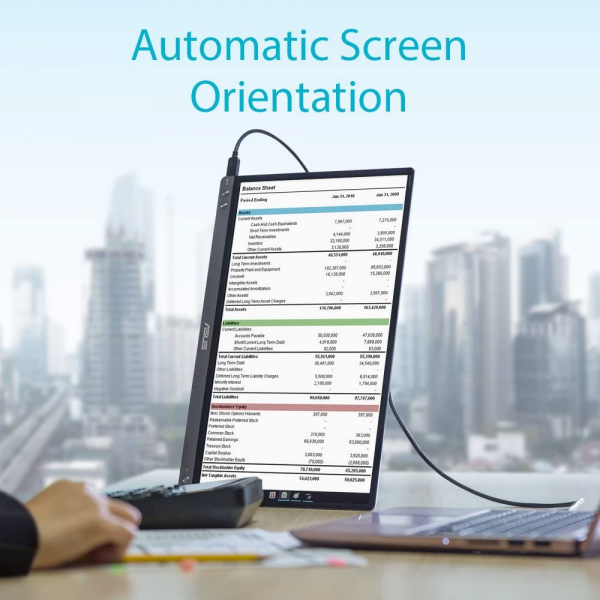
Reactivity
The Asus MB16AC monitor does not use Pulse Width Modulation (PWM) to adjust the brightness. It therefore does not flicker and does not cause headaches in the most sensitive people. It also offers a blue light filter.
The setting of the overdrive is called TraceFree at Asus. The standard setting on 60 is quite effective since it reduces ghosting to the maximum without causing a reverse ghosting effect. We measured a remanence time of 11.5 ms, correct for an IPS monitor. This monitor does not have an HDMI input, we could not measure the delay in the display (input lag).
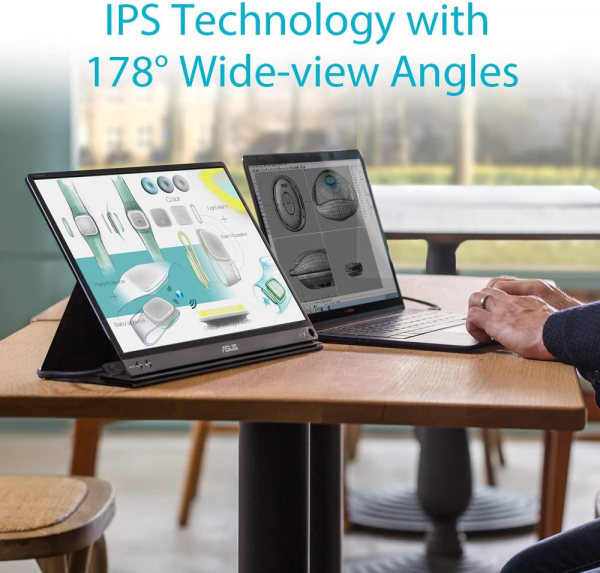
Conclusion
The Asus MB16AC monitor allows you to do dual screen even on the go. Whether with a 13 or 15 inch laptop, the addition of this 15.6 inch screen is a real plus, especially since the implementation is childish. Too bad the glossy slab and its limited maximum brightness prohibit outdoor use. For the rest, the Asus MB16AC is an excellent companion for the mobile worker.

Specifications

